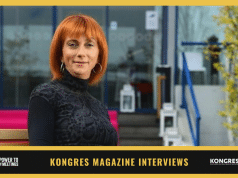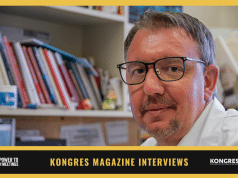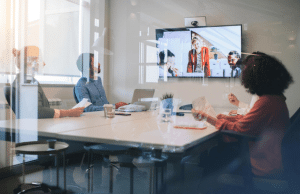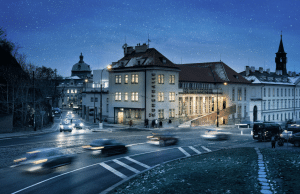Eric Everard is the founder and Executive Chairman of Artexis, the exhibitions organiser and hall management company, and easyFairs, which runs approximately 100 trade shows per year in 16 countries. In 2011 he served as the President of UFI, the Global Association of the Exhibitions Industry. Eric lives in Brussels with his wife and four children.
The global economic crisis of 2009-2010 sent shockwaves through the exhibitions industry. It had unfortunate repercussions for many. However, a crisis can also be a catalyst for positive change. It forces us to go back to basics and ask how we can address our customers’ needs more effectively.
Most exhibition industry practitioners remain upbeat, but they recognise that we have often been too slow to embrace new business models, communication and networking techniques. This is changing, partly under the stimulus of the economic situation, but even if the economy rebounded tomorrow, we have moved on. Trade shows have expanded beyond their traditional role as a temporary space in which to conduct business. Stimulated by new online platforms such as blogs and industry portals, the new trade show is evolving into a much more collaborative undertaking that combines physical and online presence – with the latter becoming a permanent fixture.
At easyFairs, we started out as a “no frills trade shows” operation but it soon became clear to us that, while customers understood and appreciated our time and cost-effective approach to the physical show, they wanted more in terms of content and collaboration. This year we introduced our ‘Online365 Pack’, which enables exhibitors to reach out to their market throughout the year.
Relationship brokers
We will see a further shift away from selling rentals on floor space to consultative selling, where space rental is just one element in a total package. Exhibition organisers are brokers of commercial relationships; we provide a platform for information exchange. So long as we bring buyers, sellers, and other stakeholders together, they do not really mind that much if their first encounter is a virtual one. However, this means that organisers must understand their stakeholders’ industries and business models better than ever. It also implies that we must re-examine our own business models and we must invest in the tools to do the job more effectively, such as intelligent CRM.
It has been a guiding principle for us at easyFairs that our salespeople and marketers should become experts in their sectors. They are required to make at least five non-sales calls a week just to find out what’s on people’s minds.
New technology
Exhibition organisers no longer regard new communications technologies as a threat. We are seeing more and more smartphone apps being deployed at trade shows and their importance as devices for exchanging information and staying in contact can only increase. I believe the message has finally sunk in that social media and mobile communications increases the likelihood and quality of live interaction; other industries such as retail and hospitality have understood this for some time.
Few still need convincing that social media offers great opportunities for promoting shows, carrying out market research, deepening customer relationships and facilitating the creation of show content. Most of all, social media will facilitate matchmaking before, during and after the physical trade show.
While new technologies open up new possibilities, we should not simply embrace them with our eyes shut. Many in our industry – myself included – have warned against the limitations of virtual exhibitions. As stand-alone events they make sense in specific circumstances. For example, online presentation might be preferable because of limitations on people’s time or mobility. They make some sense if the aim is simply knowledge transfer or the presentation of non-physical services. On the other hand, would you select a lawyer or an architect on the basis of a webinar? I find it far more likely that virtual or cyber exhibitions will become an extension of physical exhibitions. For example, a visitor might want to involve colleagues back at the workplace in discussions and presentations onsite. I find the prospects for such onsite-online mash-ups tremendously exciting.
The one new technology development that does scare me is RFID. I know I am probably now in a minority and I have heard all the arguments in favour of improved security and streamlining of processes, but really, I feel uneasy about being tracked around the exhibition floor. I don’t want strangers to know which stands I visited and which I missed, and whatever else I was up to.
Metrics & transparency
An economic downturn forces marketers and other business professionals to look for value. They are under pressure to justify expenditure. “We always exhibit at this show!” is no longer good enough for CFOs, who reply “Then it’s time you considered the alternatives.” In response, organisers are introducing better and more reliable metrics that demonstrate RoI, supported by better dialogue and engagement with stakeholders via the internet and social media. I hope this means that organisers feel under less pressure to demonstrate constant year-on-year growth in visitor figures and instead provide more realistic and trustworthy information on qualitative outcomes.
One of the huge advantages of our approach at easyFairs is price transparency. Our motto is “the price of your stand is the cost of the show”. Price transparency makes it easier for exhibitors to calculate RoI and it was one reason we increased our sales revenue through the recession, while other organisers struggled.
Sustainability
Finally, sustainability is on everybody’s agenda in the exhibitions industry, and I am convinced it will stay there because it makes good business sense. Energy prices will increase and resources, in particular water, will become more scarce, therefore hall owners should be installing renewable energy sources and water management and recycling facilities. This can and should be done in close cooperation with local authorities, who have an interest in keeping exhibition halls open and in promoting a responsible and progressive image. From 2008 to 2010 the hall management side of my company, Artexis, worked with the city authorities in Ghent and their environmental development agencies to modernise Flanders expo with 54,000 square metres of solar panels, making it one of the most sustainable exhibition halls in the world.
At easyFairs we set out to be a green company from the start. All of the stands at our show are built from reusable modules so waste is minimised. But we should also raise our profile as enablers of sustainable business – after all, trade shows greatly reduce the need for business travel and thereby cut carbon emissions. If we want to profit from the upturn, we must communicate more positively about these and all the other economic and social benefits of the exhibitions industry.
Eric Everard













